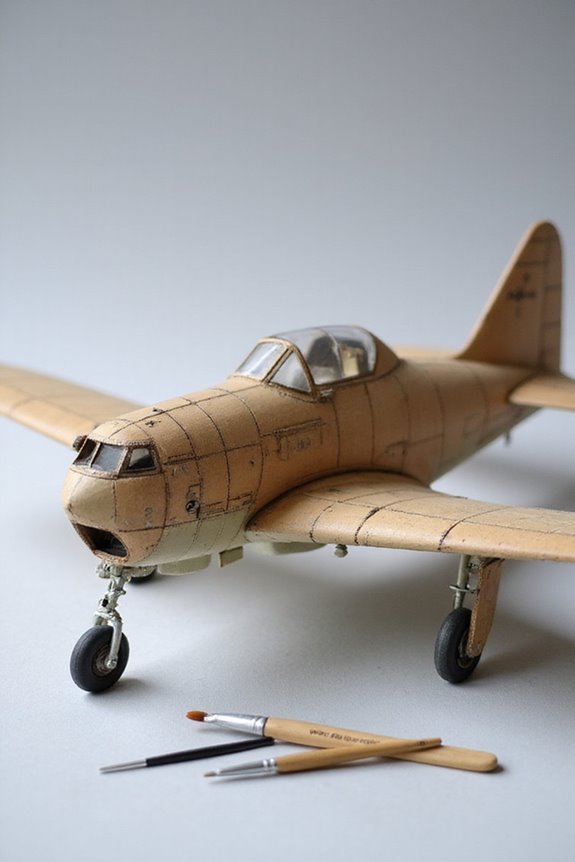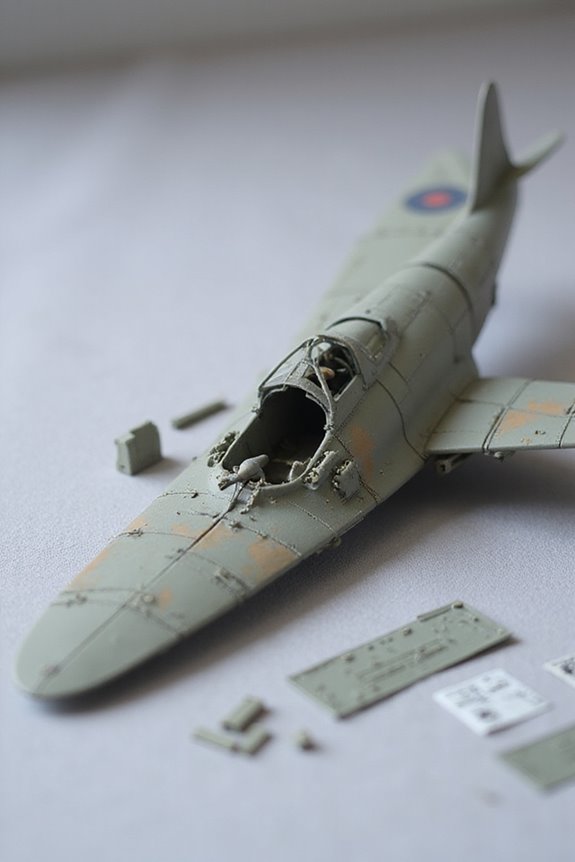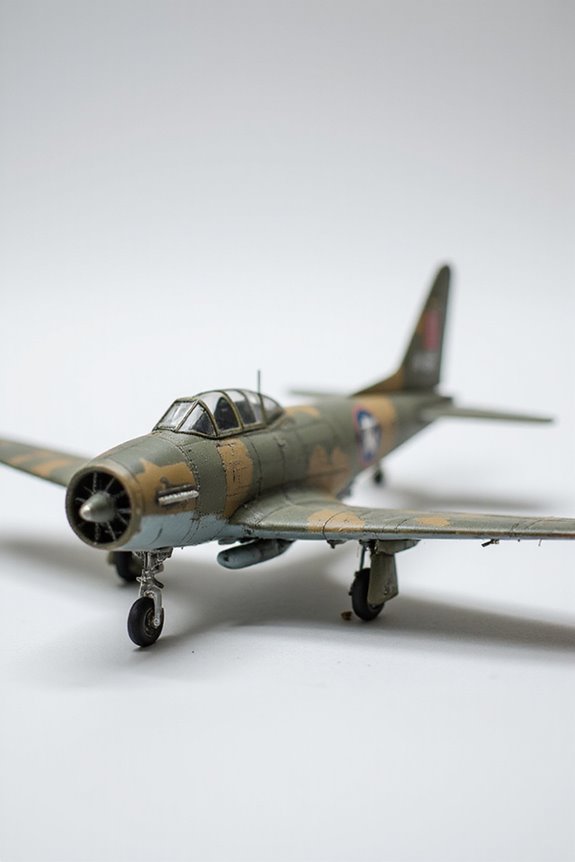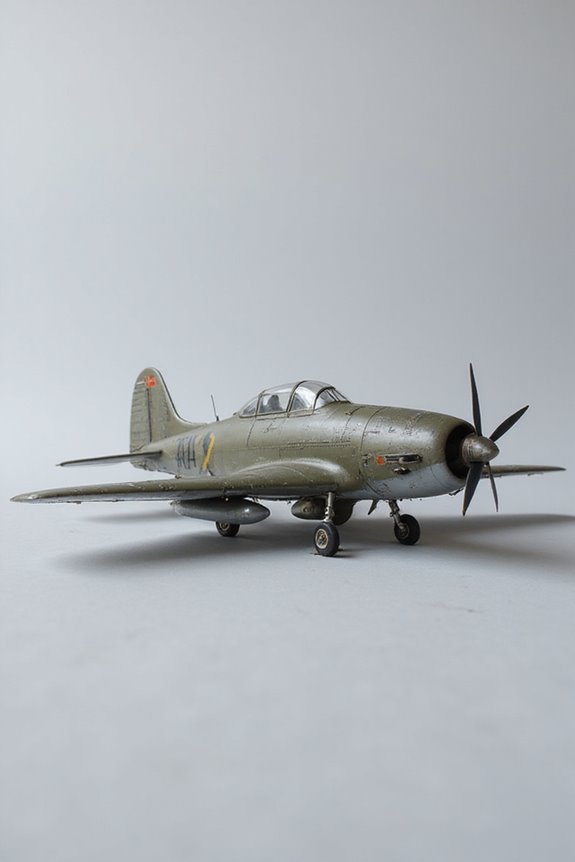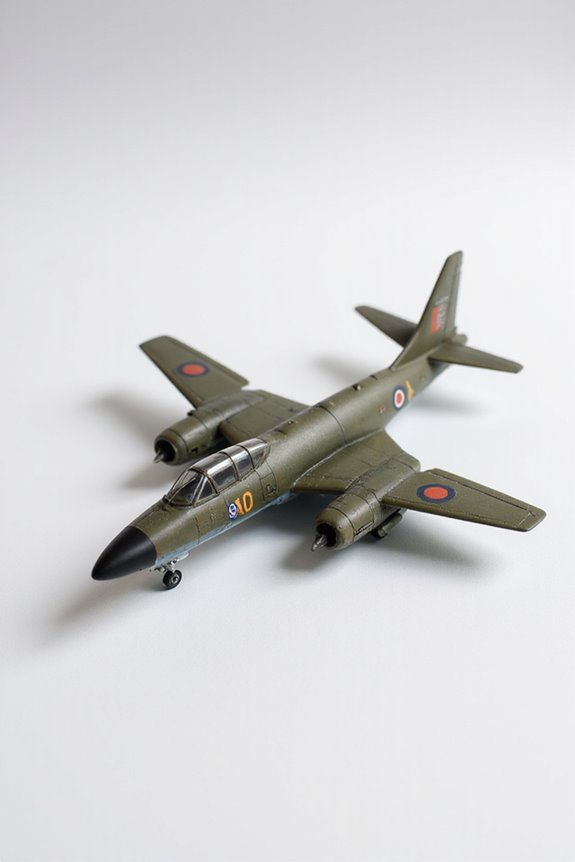To get feedback on our model aircraft projects, we should immerse ourselves in online hobbyist communities like RC Groups or FliteTest. Sharing clear images and asking specific questions can really help us get useful insights. We can also employ tech tools, like simulators, to evaluate flight dynamics objectively. Observing flight behaviors and keeping notes will sharpen our analysis. Plus, seeking mentorship and engaging in structured feedback sessions can lead to valuable tips. There’s much more to explore together!
Key Takeaways
- Engage with hobbyist communities on forums like RC Groups and FliteTest for specific project feedback and advice.
- Use structured feedback models, emphasizing key parameters for efficient and effective design discussions.
- Incorporate technology, such as performance metrics and simulators, to gain objective evaluations of your projects.
- Document flight behaviors through observational techniques to capture detailed feedback and improve designs.
- Foster peer collaboration by scheduling structured feedback sessions for constructive insights and mutual learning.
Seeking Feedback From Experienced Hobbyist Communities
When we explore the world of model aircraft, seeking feedback from experienced hobbyist communities can feel like bringing a new dish to a potluck; everyone’s keen to share their thoughts! Engaging with forums like RC Groups or FliteTest can open doors to invaluable insights.
But let’s remember critique etiquette—we all want constructive feedback, not a roast! Respectful interaction fosters better community engagement. By asking specific questions and showcasing clear images of our projects, we set ourselves up for success.
We should also consider the tone of each forum; some are laid-back, while others can get heated. By knowing the cultural norms, we can navigate these waters more easily, ensuring we receive the advice we really need for our projects. Additionally, sharing details about specific control modes can enhance the quality of feedback received, as it provides context for your aircraft’s capabilities.
Utilizing Structured Feedback Models
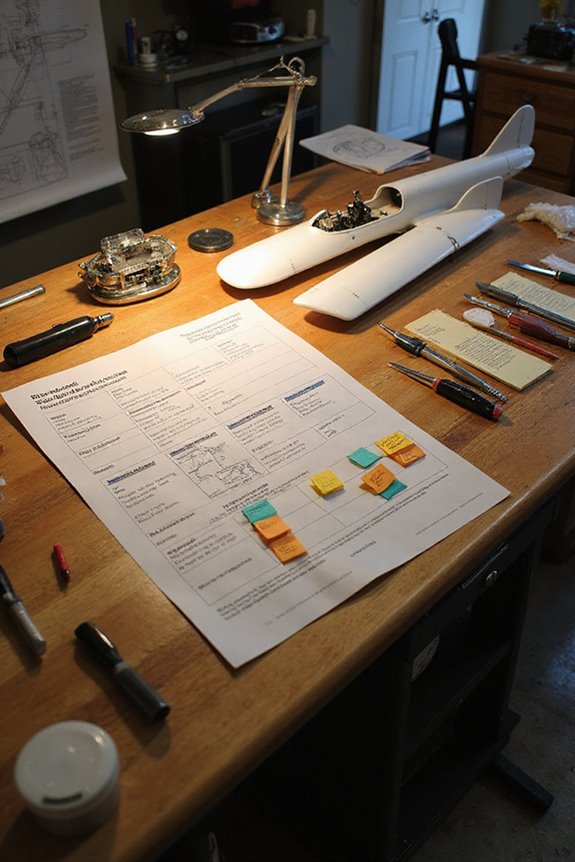
Utilizing structured feedback models can feel like tuning a musical instrument—we all want that sweet sound of precision! One effective approach is parametric modeling, which helps us generate aircraft designs based on key parameters. This allows for standardized comparisons and quicker feedback loops.
Integrating feedback strategies within a Multi-Disciplinary Optimization framework gives us a holistic view of design trade-offs. Think of it as a collaborative jam session where every note matters!
Incorporating Technology for Objective Evaluation
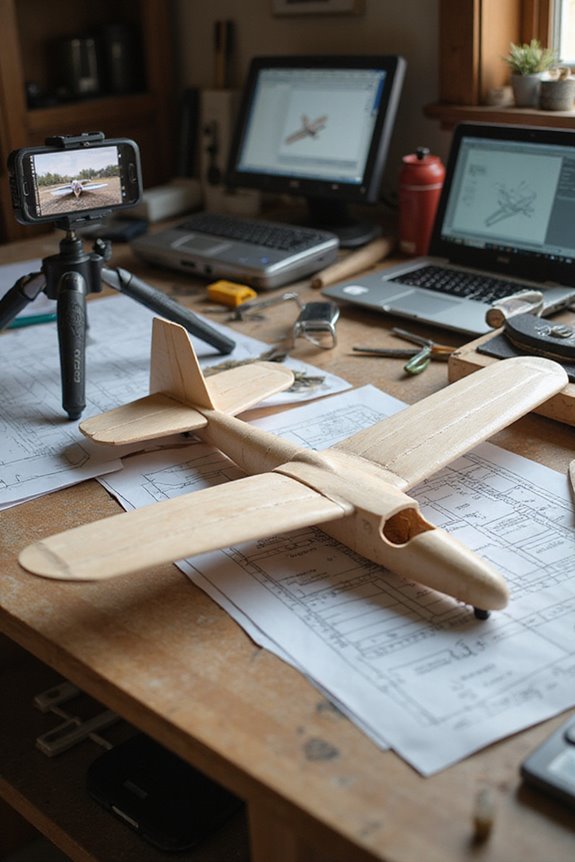
Incorporating technology for objective evaluation in model aircraft projects opens up a world of opportunities, much like revealing a treasure chest filled with tools and insights. With technology integration, we can analyze performance metrics using exciting methods like frequency-domain evaluations. Utilizing tools such as Power Spectral Density helps us decipher the control inputs like skilled detectives solving a mystery.
Moreover, Virtual Operational Testing allows us to simulate aircraft missions early on. This means we can gather valuable feedback before breaking a sweat—and before anything crashes! Scenario-based evaluations further help us weigh design options against real-world conditions. By blending these technologies, we gain a clearer picture of our aircraft’s performance, making our projects fly higher with precision and confidence. Additionally, using simulators like RealFlight Evolution can enhance our understanding of flight dynamics through realistic flying conditions.
Applying Observational and Performance-Based Feedback Techniques
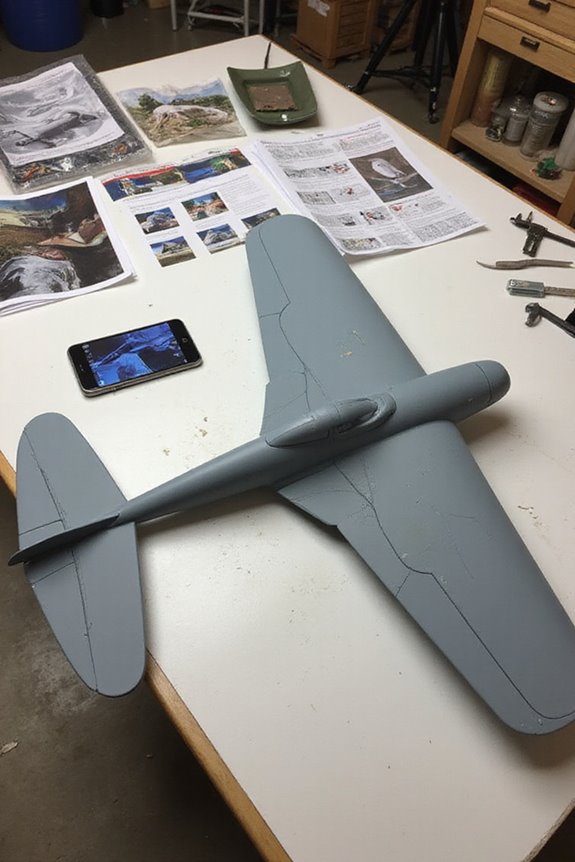
Now that we’ve set the stage with technology for objective evaluations, let’s talk about how we get real-world feedback on our model aircraft projects. Observation techniques are essential here. They help us detect specific behaviors during flight without getting tangled in interpretation. We should document what we see, ensuring our notes are clear and specific, avoiding generalizations or ambiguous adjectives.
While evaluating performance, let’s consider both technical and non-technical skills simultaneously. This gives us a more holistic understanding of what’s happening in flight. Pairwise preference feedback can help us see which flight paths perform better. It’s like comparing two pizza toppings—one clearly reigns supreme! By refining our methods, we enhance our ability to improve and truly master those flying machines. Additionally, incorporating 3-axis gyroscopes can significantly aid in maintaining stable flight, especially for beginners.
Engaging in Peer and Mentorship Feedback Sessions
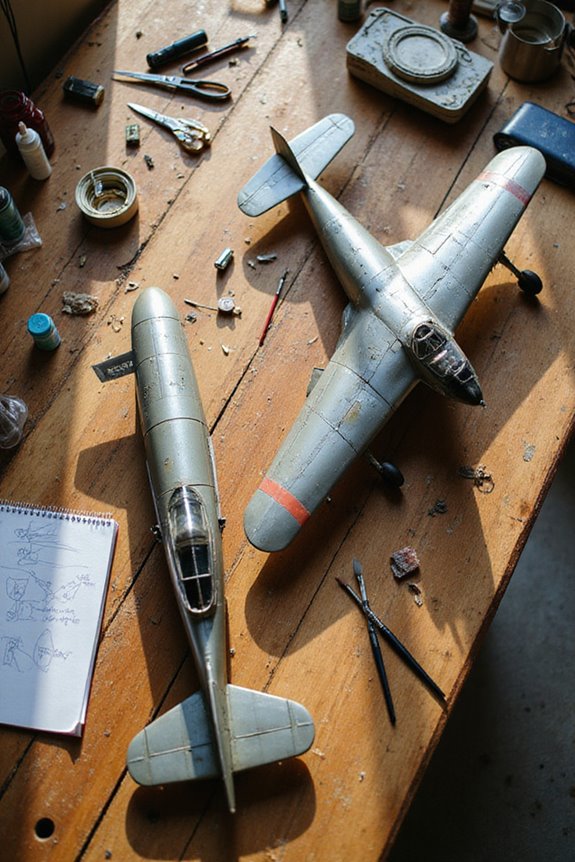
When we plunge into peer and mentorship feedback sessions, it’s like adding turbochargers to our learning engines. These sessions foster peer collaboration, letting us tackle projects together while sharing honest thoughts. Using structured feedback—like the SBI model—helps us give clear, actionable insights.
Mentorship roles are essential too; experienced mentors can offer expert tips on everything from design to performance. Regular check-ins keep us on track, ensuring we apply feedback meaningfully.
Let’s also remember to keep the dialogue constructive and open. It’s not just about critique, but also about learning from each other’s strengths and weaknesses. After all, every piece of feedback is a stepping stone to building better models—and who doesn’t want their aircraft soaring high?
Implementing Best Practices in Model Building to Facilitate Feedback
Getting feedback on our model aircraft often hinges on how well we implement best practices during the building process. First off, let’s talk about using proper building surfaces and jigs. A flat board helps keep our parts aligned and straight. Covering plans with wax paper? Genius! It keeps that pesky glue from ruining our blueprints.
For model accuracy, we should always cut structural pieces in the right order. Trust us, symmetry is key. And if we’re reinforcing spar components, let’s make sure we plan their placement carefully. Additionally, using high-quality materials like balsa wood and plywood can significantly enhance the overall performance and durability of our models.
Lastly, let’s keep our materials organized. Nothing affects feedback more than lost parts. Remember, a well-built model is a happy model. With enough practice, our feedback sessions will feel like a well-oiled machine!
Frequently Asked Questions
What Platforms Are Best for Sharing Model Aircraft Photos?
When sharing model aircraft photos, we’ve found social media and online forums to be fantastic platforms. They connect us with fellow enthusiasts, allowing us to showcase our work while receiving invaluable feedback and inspiration.
How Do I Handle Negative Feedback Constructively?
When we receive negative feedback, we should embrace a positive mindset. By viewing constructive criticism as an opportunity to grow and asking clarifying questions, we can transform our skills and improve future results together.
Can I Receive Feedback From International Communities?
We can receive valuable feedback from international communities through online forums. These global networks connect us with passionate modelers, allowing us to share our projects and gain insights that enrich our crafting experience.
What Is the Ideal Amount of Detail in Feedback Requests?
Isn’t it amusing how vague requests often lead to vague feedback? By providing specific examples and posing concise questions, we can guarantee our feedback requests are as focused and effective as possible. Let’s elevate our conversations!
How Can I Improve My Communication With Mentors?
To improve communication with mentors, we should focus on effective questioning and active listening. By asking open-ended questions and truly hearing their responses, we can deepen our understanding and strengthen our mentoring relationships.

